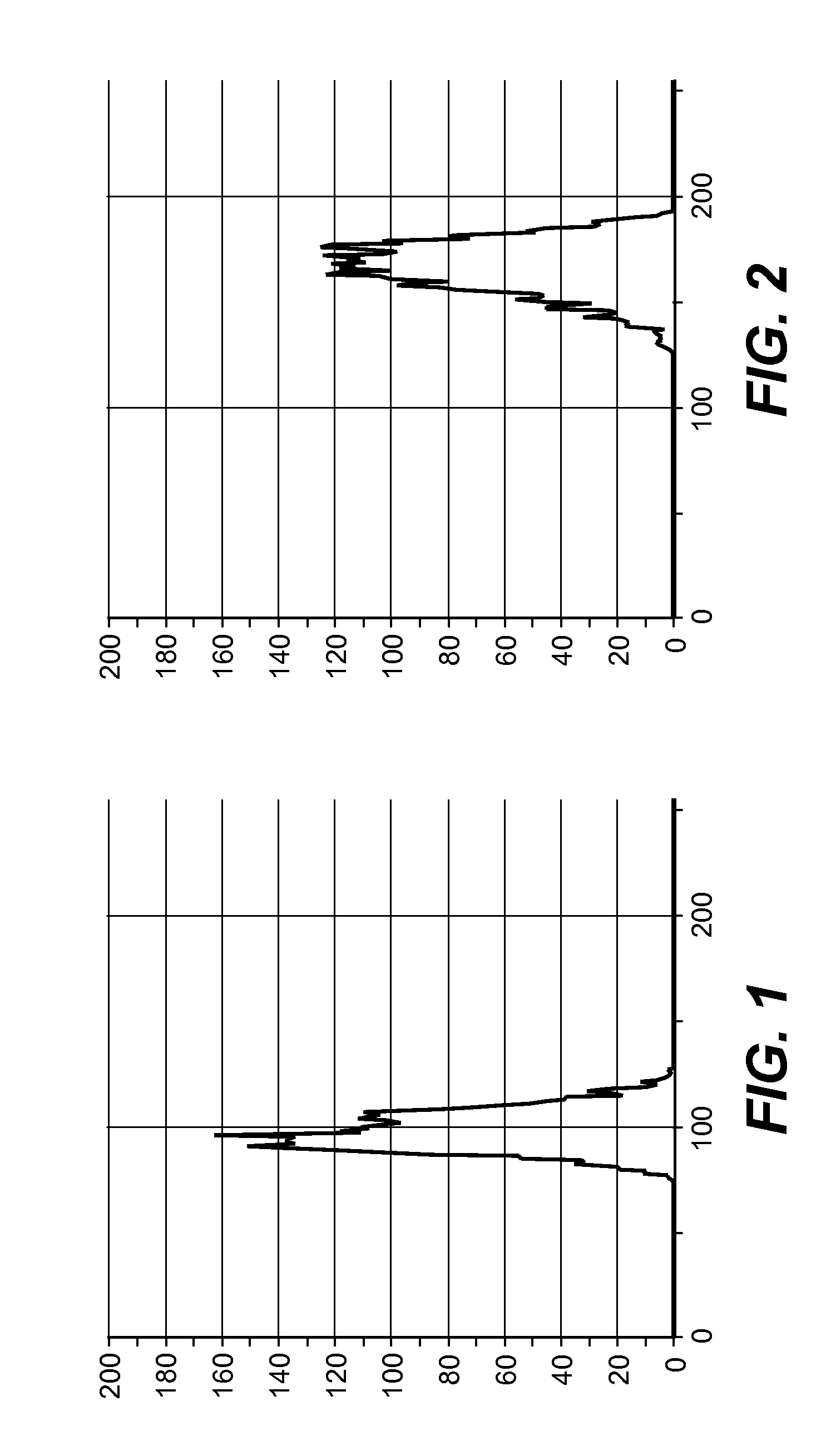Preparation of porous particles with multiple markers
a technology of porous particles and markers, applied in the field of preparation, can solve the problems of requiring more sophisticated detection equipment and inability to readily detect markers with a microscop
- Summary
- Abstract
- Description
- Claims
- Application Information
AI Technical Summary
Benefits of technology
Problems solved by technology
Method used
Image
Examples
invention example 1
Porous Particles Containing Cyan and Magenta Marker Materials (4 Weight %) in Separate Discrete Pores
[0214]A first organic phase (563 g) containing 18.3 weight % of Kao N and 0.2 weight % of EFKA 6225 in ethyl acetate was emulsified with the first aqueous phase prepared with 134 g of a 2.5 weight % of CMC1 and 51 g of the CM1 using the Silverson Mixer followed by homogenization in the Microfluidizer® at 9800 psi to give a first cyan water-in-oil emulsion. A second water-in-oil emulsion was prepared with the second organic phase consisting of 563 g of an 18.3 weight % of Kao N and 0.2 weight % of EFKA 6225 in ethyl acetate, and the second aqueous phase containing 127 g of a 2.7 weight % solution of CMC1 and 58 g of MM1 in the same manner as the first water-in-oil emulsion. A 25 g aliquot of the first water-in-oil emulsion and a 25 g aliquot of the second water-in-oil emulsion were then added to 50 g of a 14 weight % solution of Kao N and 0.08 g of EFKA 6225 in ethyl acetate with gent...
invention example 2
Porous Particles Containing Cyan and Magenta Marker Materials (8 Weight %) in Separate Discrete Pores
[0215]Porous particles were prepared as described in Invention Example 1 except that a 300 g aliquot of the first water-in-oil emulsion was added to a 300 g aliquot of the second water-in oil emulsion with gentle mixing. This mixture of first and second water-in-oil emulsions was then added to a third aqueous phase containing 980 g of the citrate phosphate buffer and 20 g of Nalco 1060. The homogenization, solvent evaporation, and isolation of the porous particles were carried out as described in Invention Example 1. The resulting porous particles had a mode particle size of 11 μm and an AR of 0.915, and a porosity of 39.6%. The purple-colored porous particles had distinct cyan and magenta markers in separate discrete pores.
invention example 3
Porous Particles Containing Cyan and Magenta Marker Materials 0.25 Weight %) in Separate Discrete Pores and Having a Very Few Pores
[0216]Porous particles were prepared as described in Invention Example 1 except that a 1.56 g aliquot of the first water-in-oil emulsion was mixed with an equal amount of the second water-in oil-emulsion and added to 96.4 g of a 14 weight % solution of Kao N and 0.19 g of EFKA 6225 in ethyl acetate with gentle mixing. The resulting porous particles had a mode particle size of 18 μm and an AR of 0.675, and a porosity of 5.4%. The purple-colored porous particles had distinct cyan and magenta markers in separate discrete pores and were very easily visible in an optical microscope at 100× magnification.
PUM
| Property | Measurement | Unit |
|---|---|---|
| pressure | aaaaa | aaaaa |
| aspect ratio | aaaaa | aaaaa |
| aspect ratio | aaaaa | aaaaa |
Abstract
Description
Claims
Application Information
 Login to View More
Login to View More - R&D
- Intellectual Property
- Life Sciences
- Materials
- Tech Scout
- Unparalleled Data Quality
- Higher Quality Content
- 60% Fewer Hallucinations
Browse by: Latest US Patents, China's latest patents, Technical Efficacy Thesaurus, Application Domain, Technology Topic, Popular Technical Reports.
© 2025 PatSnap. All rights reserved.Legal|Privacy policy|Modern Slavery Act Transparency Statement|Sitemap|About US| Contact US: help@patsnap.com

